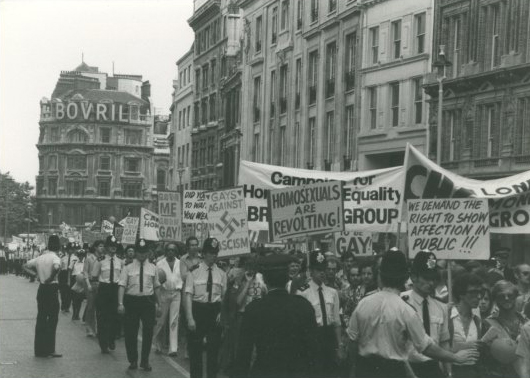
Since it’s origin hundreds of years ago, the word “gay” has evolved into many different meanings. It’s gone from positive, to negative, back to positive again. But isn’t that the beauty of language? Meanings are always shifting and things are always being created, everything in constant evolution.
Today, “gay” is associated with the LGBTQ+ community, meaning attraction to someone of the same gender. But it wasn’t always used in the same context we associate it with today.
The word “gay” first arrived in the English language during the 12th century. The word was initially used to mean “joyful” or “carefree.”
While it may not be common to use the word “gay” to mean joyful or carefree today, it is still an occurrence. John Hickey of PFLAG Illinois–an organization that raises awareness and provides LGBTQ+ education says it would not be offensive, though it may be confusing for the listener.
“I don’t think it would be inappropriate to use the term gay in the original context of the term,” Hickey says. “However, it may be confusing to young people who may not know its original meaning.”
“Gay” began to take on a bit of promiscuity in the late 17th century. By then, it extended from its definition of “carefree” to “addicted to pleasures and dissipations.” The slight change in definition implies questionable morals in the person being described. The definition continued to evolve.
In the 1890s, “gay” acquired meanings that linked the term to sexuality. “Gay woman” was another word for prostitute; a “gay man” was a womanizer; a “gay house” was a different name for a brothel. A word that was once used to define joy was now used to describe people or activities that were viewed as promiscuous.

Around the mid-20th century, the word “gay” started being used to describe individuals–primarily men–who are attracted to others of the same gender. Andrew Reitman, Chair of Communication for Drake University’s Rainbow Union, an organization that provides advocacy and education for the LGBTQ+ members on campus, says it was initially used in a derogatory or negative manner to belittle others.
“It had a negative connotation in that it implied that being gay was something you didn’t want to be,” Reitman says. “However, this is very much not the case. Being gay is not a bad thing, and is something that should be embraced. It’s natural and people have no control over their sexuality, so it should not be something that’s shamed or used as an insult.”
Despite the initial intent, the word was soon used by the LGBTQ+ community themselves, taking back the power of the word “gay.” It became code for those in the queer community to be able to discuss their relationships in public. Until then, the word “homosexual” was used to describe same-sex relationship. Today “homosexual” is considered offensive, as it refers to an idea that same-sex attraction is a mental illness to be cured.
Since the word “gay” has been adopted by the LGBTQ+ community, it has become common practice to associate it with the community. Deputy Director of Education of Iowa Safe Schools, Jordan Mix, says that the reclaiming of the word has become positive for the LGBTQ+ community.
“For a word like ‘gay’ that initially has positive meaning, from there evolves into promiscuity, and eventually became associated with gay people the way we would think of it today,” Mix says, “To me, that means that it would be reclaimed.”
